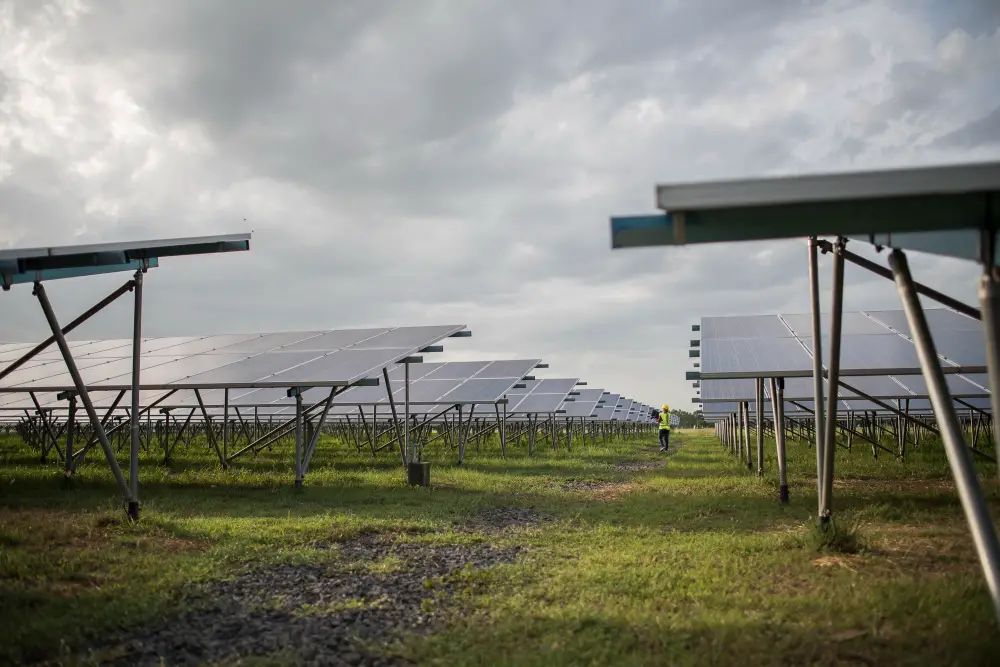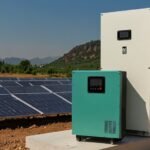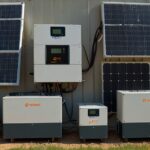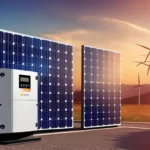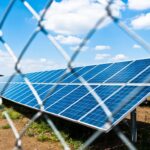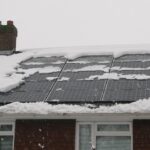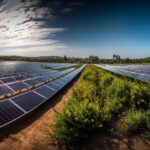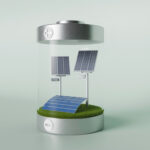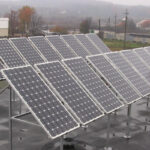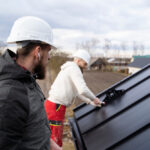In a world where the importance of sustainable energy sources is continually on the rise, solar farms have emerged as a viable and eco-friendly alternative to conventional power generation methods. If you own a piece of land and are interested in contributing to the green energy revolution while also potentially generating a stable income stream, leasing your land for a solar farm can be an attractive option. However, before you jump into this venture, there are several essential steps and factors to consider. In this comprehensive guide, we’ll walk you through the process to get a solar farm on your land, from initial considerations to signing a lease agreement.
Steps to Get a Solar Farm on Your Land
1. Evaluate Your Land’s Suitability
The first step in leasing your land for a solar farm is to determine if it’s suitable for solar energy generation. Several factors affect a land’s suitability for a solar farm, including:
Location: Ideally, your land should be in an area with ample sunlight throughout the year. Solar farms perform best in regions with high solar irradiance.
Size: Solar farms require a significant amount of land, typically several acres or more, depending on the capacity of the installation. Ensure your land meets the size requirements for a solar farm.
Topography: Flat or gently sloping land is preferable for solar installations, as it simplifies construction and maintenance.
Accessibility: Easy access to the site for equipment and personnel is crucial. Roads and infrastructure should support the transportation of heavy machinery and solar panels.
Grid Connection: Proximity to the electrical grid is essential for transmitting the generated electricity. It’s more cost-effective to connect to an existing grid than to build a new one.
2. Conduct a Feasibility Study
Once you’ve established that your land is suitable for a solar farm, consider conducting a feasibility study. This study will provide a detailed assessment of the project’s viability, including:
Solar Resource Assessment: Evaluate the solar resource potential on your land. This includes analyzing historical weather data, sunlight hours, and shading from nearby structures or trees.
Environmental Impact Assessment: Assess the environmental impact of the solar farm on the surrounding ecosystem. This includes evaluating potential impacts on wildlife, water sources and, vegetation management on solar farm.
Financial Projections: Estimate the costs of developing the solar farm, including land preparation, installation of solar panels, and connection to the grid. Compare these costs to the potential revenue from selling electricity.
Regulatory Compliance: Investigate the local zoning laws and regulations governing solar farm development. Ensure that your project complies with all necessary permits and approvals.
3. Find a Solar Developer
To bring your solar farm vision to life, you’ll likely need to partner with a solar developer or energy company with experience in solar energy projects. Here’s how to go about finding the right partner:
Research: Look for solar developers with a strong track record in developing and operating solar farms. Seek recommendations from local utilities, industry associations, or environmental agencies.
Request Proposals: Invite solar developers to submit proposals for your project. These proposals should outline their experience, project plans, financial terms, and time required to build a solar farm.
Evaluate Proposals: Carefully review each proposal, considering factors like the developer’s experience, financial stability, and their ability to secure financing for the project.
Negotiate Terms: Once you’ve selected a developer, negotiate the terms of the lease agreement. This should include details such as land rental fees, lease duration, and revenue-sharing arrangements.
4. Secure Financing
Solar farm development is a capital-intensive endeavor. While the developer may provide some financing, you may need to secure additional funding. Options include:
Project Financing: Work with a bank or financial institution specializing in renewable energy projects to secure loans or financing for your solar farm.
Tax Credits and Incentives: Explore available tax credits and incentives for solar energy projects at the federal, state, and local levels. These can significantly reduce project costs.
Investors and Partnerships: Consider partnering with investors or forming partnerships with organizations interested in investing in renewable energy.
5. Sign a Lease Agreement
Once all the details are in place, it’s time to formalize your arrangement with the solar developer by signing a lease agreement. This agreement should cover:
Land Rental Terms: Specify the duration of the lease, rental fees, and any annual increases. Be sure to outline the process for renewing the lease or terminating it.
Responsibilities: Define the responsibilities of both parties, including landowner obligations, maintenance, and insurance requirements.
Revenue Sharing: Outline how revenue from electricity generation will be shared between you and the developer. This typically involves fixed payments or a percentage of the revenue.
Environmental Protection: Include clauses that protect the environment and specify how the developer will mitigate any environmental impacts.
Dispute Resolution: Establish a process for resolving disputes or disagreements that may arise during the project.
Termination Clauses: Clearly outline the conditions under which the lease can be terminated, such as non-payment of rent or violations of the agreement.
6. Begin Construction
With the lease agreement in place and financing secured, you can start to build a solar farm. This phase involves several key steps:
Site Preparation: Clear the land, level the terrain if necessary, and ensure proper drainage. Access roads and infrastructure may also need to be built or upgraded.
Solar Panel Installation: Install the solar panels according to the project’s design specifications. This phase involves mounting the panels on supports and connecting them to the electrical system.
Electrical Infrastructure: Build or upgrade electrical infrastructure to connect the solar farm to the grid. This includes inverters, transformers, and transmission lines.
Environmental Compliance: Ensure compliance with environmental regulations throughout the construction process. Implement measures to protect local ecosystems and wildlife.
7. Ongoing Operations and Maintenance
Once the solar farm is operational, ongoing maintenance is essential to maximize its lifespan and energy production. The responsibilities of the developer typically include:
Regular Inspections: Conduct routine inspections to identify and address any issues with the solar panels, electrical equipment, or infrastructure.
Cleaning and Repairs: Clean the solar panels to remove dirt, debris, and snow, which can reduce energy production. Repair or replace damaged equipment as needed.
Monitoring and Reporting: Implement a system to monitor the performance of the solar farm and report energy production to the grid operator.
Compliance and Reporting: Ensure continued compliance with environmental regulations and report any incidents or environmental concerns.
Factors to Consider Before You Sign Land Lease Agreement for Solar Farm
While the prospect of leasing your land for a solar farm can be lucrative and environmentally beneficial, there are critical factors to consider before signing a lease agreement:
1. Lease Terms
Carefully review the terms of the lease agreement, including the rental fees, lease duration, and any provisions for lease renewal or termination. Ensure that the terms align with your financial goals and long-term land use plans.
2. Financial Implications
Understand the financial implications of the lease, including how rental income and revenue sharing will work. Consider consulting a financial advisor or attorney to ensure you’re getting a fair deal.
3. Land Use
Consider how leasing your land for a solar farm will impact its future use. Solar farms typically require long-term commitments, so assess whether this aligns with your land’s intended use.
4. Environmental Impact
Evaluate the potential environmental impact of the solar farm on your land and the surrounding area. Make sure the developer has plans in place to mitigate any adverse effects on wildlife, vegetation, and water sources. Sustainable practices should be a priority.
5. Regulatory Compliance
Thoroughly understand the local zoning laws, permitting requirements, and regulations related to solar farm development. Ensure that both you and the developer are committed to complying with all necessary permits and approvals.
6. Community Relations
Consider how the solar farm might impact your relationship with the local community. Some residents may have concerns about the visual impact, noise, or other aspects of the project. Effective communication and community engagement can help address these concerns.
7. Maintenance and Repairs
Determine the responsibilities for ongoing maintenance and repairs. While the developer typically handles these tasks, it’s essential to have a clear understanding of what’s expected to ensure the solar farm remains in optimal condition.
8. Exit Strategy
Include an exit strategy in the lease agreement that outlines the conditions under which the lease can be terminated. This provides a safety net in case you need to reclaim the land for other purposes.
9. Legal Assistance
Engage legal counsel experienced in renewable energy lease agreements to review the terms and protect your interests. Legal professionals can help negotiate favorable terms and ensure that the agreement is legally sound.
10. Insurance Coverage
Confirm that the solar developer has adequate insurance coverage to protect against potential damages, accidents, or liability issues related to the solar farm. You should also consider your own liability insurance to safeguard your interests.
11. Financial Stability of the Developer
Assess the financial stability of the developer. Ensure they have the financial resources to complete the project successfully and operate the solar farm for its intended lifespan.
12. Grid Connection
Verify that the solar farm will have a reliable connection to the electrical grid. Grid connection is essential for selling the electricity generated by the solar panels. An experienced developer will handle this aspect, but it’s wise to confirm it’s in place.
13. Contract Flexibility
Consider how flexible the lease agreement is regarding potential changes in circumstances. This could include changes in technology, market conditions, or your own land use plans. Having some degree of flexibility in the contract can be advantageous.
14. Financial Projections
Review the financial projections for the project carefully. Make sure the revenue estimates are realistic and based on sound assumptions. It’s crucial to have a clear understanding of the potential income from the solar farm.
15. Environmental Responsibility
Ensure that the developer is committed to environmental responsibility throughout the project’s lifecycle. This includes responsible land management, wildlife protection, and adherence to sustainability practices.
Conclusion
Leasing your land for a solar farm can be a win-win situation. You can contribute to the growth of renewable energy while potentially earning a stable income from your land. However, it’s a complex process that requires careful planning, due diligence, and a thorough understanding of the legal, financial, and environmental aspects involved.
Before you embark on this journey, take the time to evaluate your land’s suitability, conduct a feasibility study, and find a reputable solar developer. When you sign a lease agreement, pay close attention to the terms, financial implications, and environmental responsibilities. With careful consideration and the right partnerships, you can turn your land into a valuable asset in the transition to a more sustainable future.

